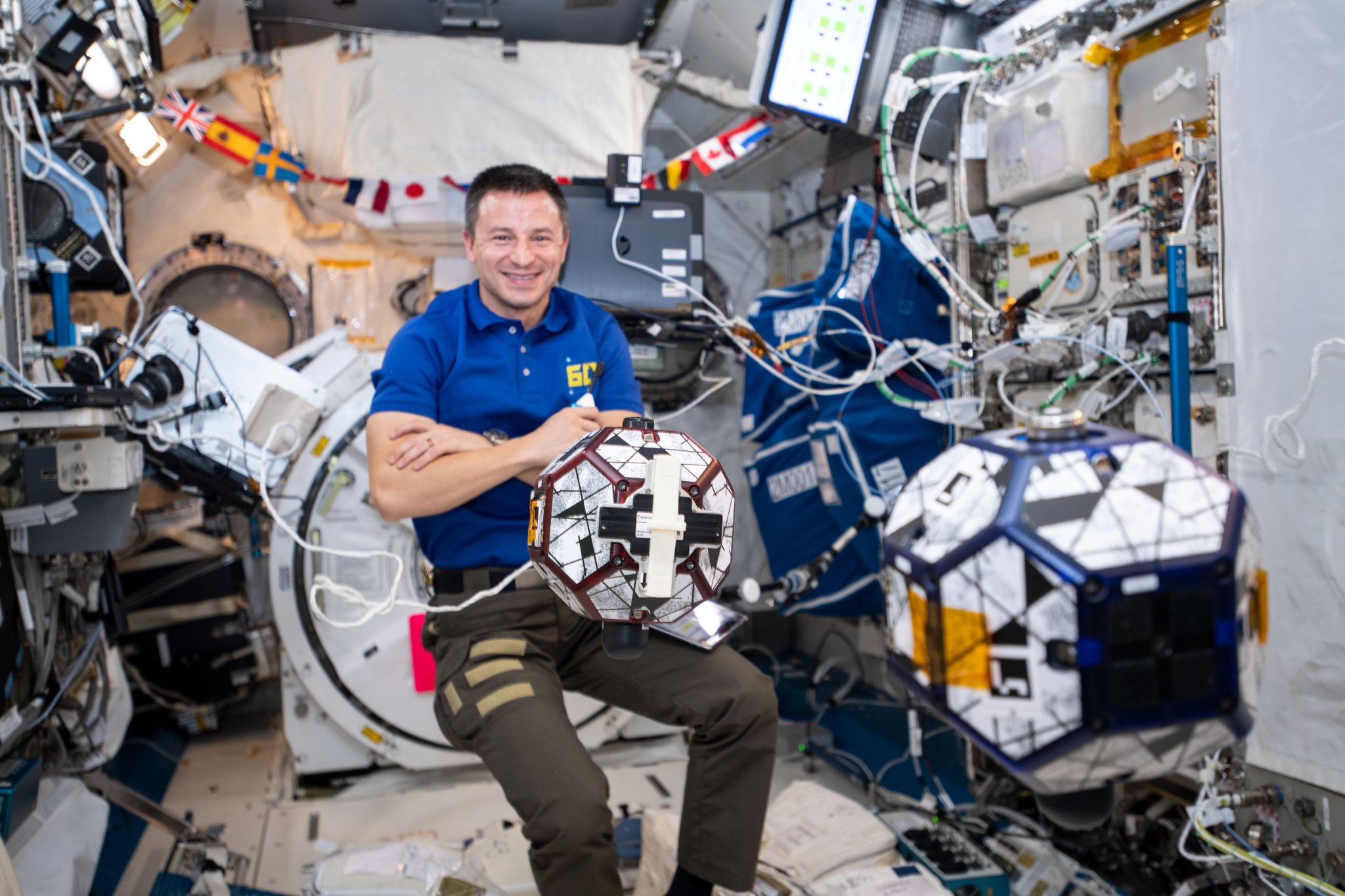On July 27, 2019, a Dragon cargo spacecraft arrived at the International Space Station carrying dozens of scientific experiments. Now, Dragon heads home. It brings samples, hardware and data from completed investigations back to Earth on its return trip. It undocked from the station on August 27.
Here are details on some of the investigations returning to the ground for further analysis and reporting of results.
A cinematic look at life and science aboard the space station
The ISS Experience is creating a cinematic virtual reality (VR) film from footage taken during the yearlong investigation covering different aspects of crew life, execution of science and the international partnerships involved on the space station. The immersive VR film will give audiences on Earth an up close and personal taste of the challenges of adaptation to life in space, the work and science, and the human interaction between crew members.
Developers Felix & Paul Studios, in partnership with private space services firm NanoRacks and the ISS National Lab, launched two cinematic virtual reality camera systems to the space station on a SpaceX Dragon cargo spacecraft in December 2018. The crew films less than four hours each week. Every week or so, they transfer footage from the camera onto solid state drives – an original and a backup – for storage and downlinking. One of each pair of drives eventually physically returns to Earth for editing and production and astronauts then can reuse the other one.
Seeking Alzheimer’s understanding in microgravity

Amyloid fibrils, a conglomeration of proteins that can build up in the body, are associated with a number of neurodegenerative diseases such as Alzheimer’s and Parkinson’s. The Amyloid Aggregation investigation assesses whether microgravity affects formation of these fibrils, which could represent a possible risk to astronauts on long flights.
Samples exposed to microgravity return to Earth using the General Laboratory Active Cryogenic ISS Experiment Refrigerator (GLACIER), a facility that maintains a temperature of -20°C. Teams on the ground must quickly retrieve the equipment and keep the samples at -20°C until delivery to the principal investigators for analysis.
From microgravity lab to manufacturing facility
Physical Optics Corporation’s Fiber Optic Production investigation created optical fibers with high commercial value on the space station using a blend of materials called ZBLAN. Studies suggest that ZBLAN optical fibers produced in microgravity should be higher quality than those produced on Earth. On Earth, ZBLAN optical fibers offer high bandwidth for the telecommunications industry, and potential applications for laser surgery, remote sensing and environmental monitoring.
The fiber produced on the space station is returning to Earth for testing to help verify previous studies and guide future efforts to manufacture large volumes of such fiber in microgravity.
Testing flexible fuel tanks
Furphy tested the transfer of fluids from a rigid tank to a flexible tank that can launch collapsed and deploy as it fills. This capability would make it possible to fuel small satellites in orbit rather than prior to launch, potentially saving launch mass and volume. This first microgravity test verified tank dynamics including slosh and retention of angular momentum. Flexible fuel tanks also have potential applications on Earth, including supporting operations in remote and harsh environments and in disaster relief.
The investigation used a rigid tank, delivered to the space station filled with water, and a FlexTank™ made from silicone elastomer, which arrived empty and compressed. After the tests, crew offloaded the water to the station’s water supply. The tanks are returning to Earth aboard the Dragon.
Other investigations returning on the Dragon:
The BioRock investigation examines interactions between microbes and rocks and physical and genetic changes in the microbes in space to support future acquisition of materials in space through biomining. After culturing and fixation on the space station, the crew placed samples into cold storage at 4°C for return to the investigation team on the ground for analysis.
LMM Biophysics 6 crystallized two proteins of interest in cancer treatment and radiation protection. The microgravity-grown crystals return to the ground for comparison to control crystallization experiments performed on Earth, using microscopic images, X-Ray diffraction analysis and structural analysis.
Synchronized Position Hold, Engage, Reorient, Experimental Satellites, or SPHERES, are bowling-ball sized satellites used to study formation flying, control algorithms, and material science. First sent to the station during Expedition 13 in 2006, these satellites have been employed in a dozen different investigations. The Dragon brings back hardware from two recent ones that examined the behavior of fluids in microgravity, SPHERES Tether Slosh and SPHERES-Slosh.
The Cell Science-02 investigation examined the effects of microgravity on healing and tissue regeneration and on the agents that induce that healing. Cultures were maintained on-orbit for approximately 21 days and then preserved and placed in -80˚C cold stowage for return to NASA’s Johnson Space Center. They will then ship to the research team within 24 hours of payload handover.
The Goodyear Tire investigation evaluates the creation of silica fillers using traditional techniques but in microgravity, potentially yielding results not possible on Earth. After processing, the six rubber samples return via cold-stowage to the Goodyear Research facility for analysis.
Mobile Companion examined the efficiency and acceptance by the crew of support from artificial intelligence (AI) during long-term missions in space. AI could provide operational support that reduces the amount of stress and workload on human crew members. Investigation hardware returns to Earth on Dragon.
Space Moss compares mosses grown aboard the space station with those grown on Earth to determine how microgravity affects growth, development, gene expression, photosynthesis and other features. Crew members fixed some of the mosses using a Chemical Fixation Bag and stored the rest for live return.
Melissa Gaskill
International Space Station Program Science Office
Johnson Space Center






























